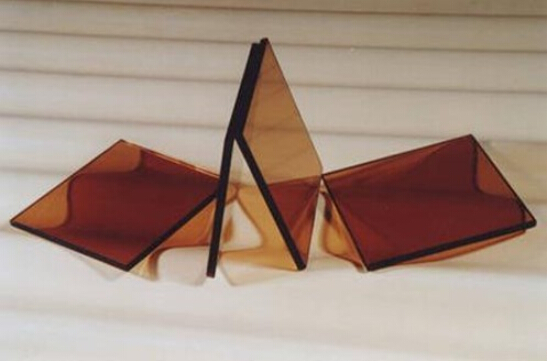

97% of solar radiation energy is concentrated in the wavelength range of 0.3-2.5um, which comes from outdoor sources; The radiation energy of objects below 100 ℃ is concentrated in the long wavelength band above 2.5um, which mainly comes from indoors.
If we use indoor windows as a boundary, we hope that outdoor radiation energy can enter during winter or in high latitude areas, while indoor radiation energy should not leak out. If the wavelength of radiation is used as the boundary, the dividing point of indoor and outdoor radiation energy is at the wavelength of 2.5um. Therefore, choosing a room window with certain functions becomes the key.
3mm thick ordinary transparent glass has a transmittance of 87% for solar radiation energy, and most of the radiation energy from outdoors during the day can pass through; But at night or in rainy weather, 89% of the thermal radiation energy from indoor objects is absorbed by it, causing the glass temperature to rise, and then dissipating its heat through radiation and convection exchange to the indoor and outdoor areas, so it cannot effectively prevent indoor heat from leaking to the outside.
Low-E insulated glass has a transmittance of over 60% for solar radiation ranging from 0.3-2.5um. During the day, most of the outdoor radiation energy can pass through, but at night and in rainy weather, more than 50% of the thermal radiation from indoor objects is reflected back into the room. Only less than 15% of the thermal radiation is absorbed by it and dissipated through re radiation and convective exchange, effectively preventing indoor heat from dissipating to the outside. The characteristic of Low-E glass enables it to control the unidirectional flow of thermal energy to the outside.
After passing through the window glass, short waves of sunlight shine on indoor objects. After being heated, these items will radiate again in the form of long waves. These long waves are blocked by the "Low-E" window glass and return indoors. In fact, the radiation through the window glass is reduced to 85% again, greatly improving the insulation performance of the window glass.
The insulation performance of window glass is generally represented by the "u" value, which is directly related to the emissivity of the glass.
The definition of "u" value is the heat transfer from air to air under ASHRAE standard conditions due to glass heat conduction and temperature difference between indoor and outdoor environments. The imperial unit is British thermal unit per hour per square foot per Fahrenheit temperature, and the metric unit is watts per square meter per Celsius temperature. The lower the "u" value, the lower the heat transfer through the glass, and the better the insulation performance of the window glass. Radiance rate is the ratio of the amount of heat radiated per unit area of an object to the amount of heat radiated per unit area of a blackbody at the same temperature and under the same conditions. The definition of emissivity is the ability of an object to absorb or reflect heat. In theory, a complete blackbody has 100% absorption for all wavelengths. The reflectance is zero. Therefore, the blackbody emissivity is 1.0.
Usually, the emissivity of float white glass is 0.84. And the emissivity of most online thermal polymerization "Low-E" coated glass is between 0.35 and 0.5. The emissivity of Low-E coated glass by magnetron vacuum sputtering is between 0.08 and 0.15. It is worth noting that a low emissivity directly corresponds to a low "u" value. The closer the emissivity of glass is to zero, the better its insulation performance.
The superiority of an "energy-saving daylighting system" must be reflected in the highest possible transmission of total solar energy, while also having the lowest "u" value. By simultaneously considering the acquisition of energy and the loss of heat, an energy balance equation was established, Ueg=UF-RFg。 The best lighting system with energy balance characteristics is vacuum magnetron sputtering "Low-E" coated insulating glass. Although single-layer glass has the highest solar energy transmission, its "u" and "Ueg" values are the worst. Therefore, it cannot meet the demand for good energy balance.
Simply high solar energy transmission can effectively maintain this energy, so it cannot be considered an energy-saving material. Low-E coated insulating glass is a good energy-saving and lighting material. It has high solar energy transmission, very low "u" value, and due to the coating effect, the heat reflected by the "Low-E" glass returns to the indoor environment, making the temperature near the window glass higher and people will not feel too uncomfortable near the window glass. Buildings that use "Low-E" window glass have relatively high indoor temperatures, so they can maintain relatively high indoor temperatures in winter without frost, which makes people indoors feel comfortable. Low-E glass can also block a large amount of ultraviolet transmission, preventing indoor items from fading.



